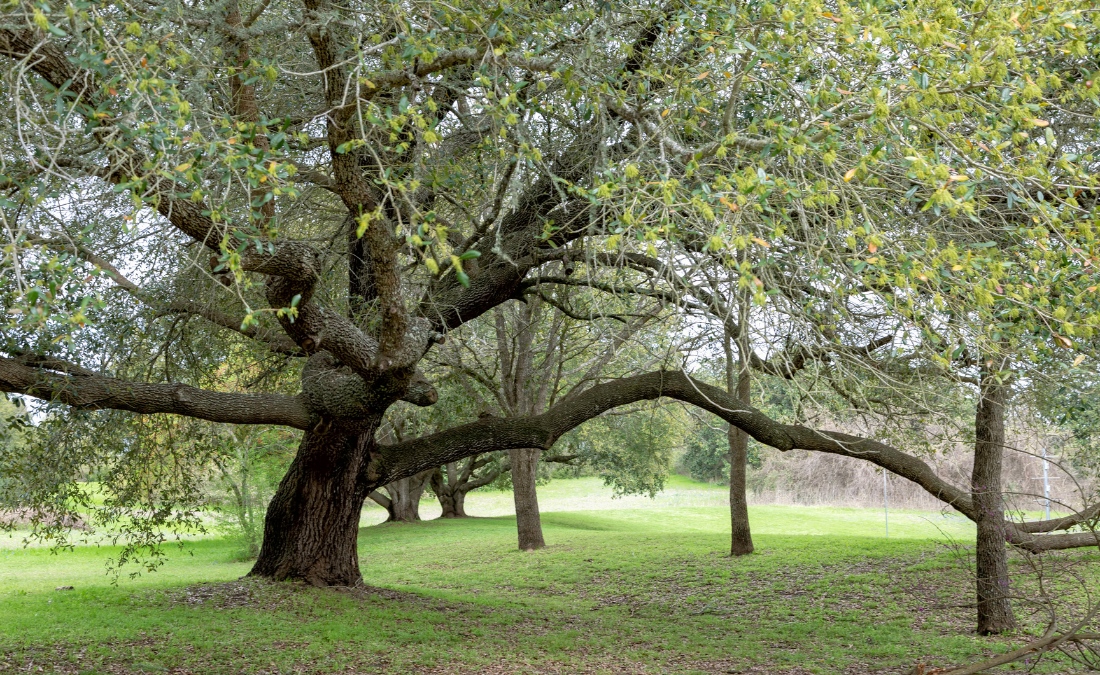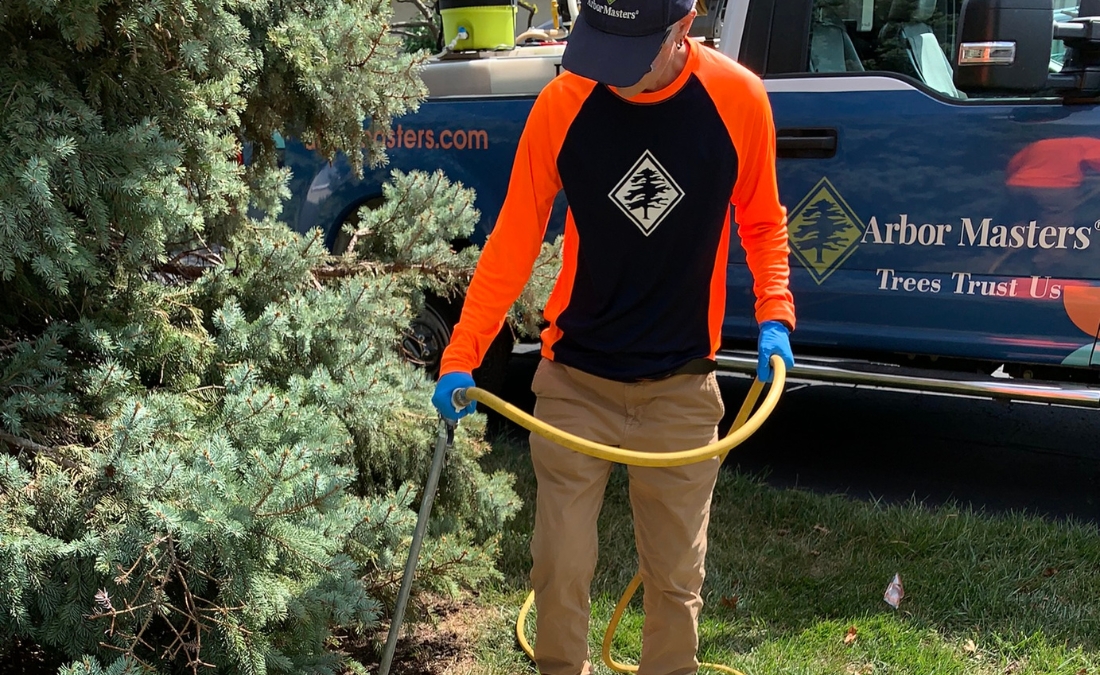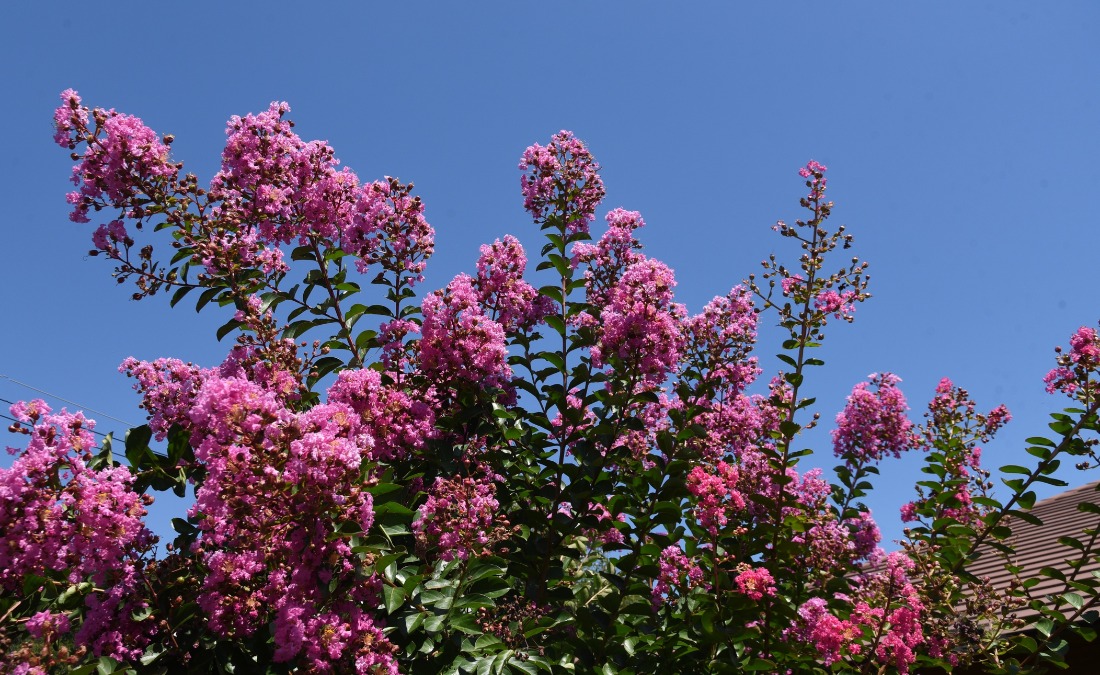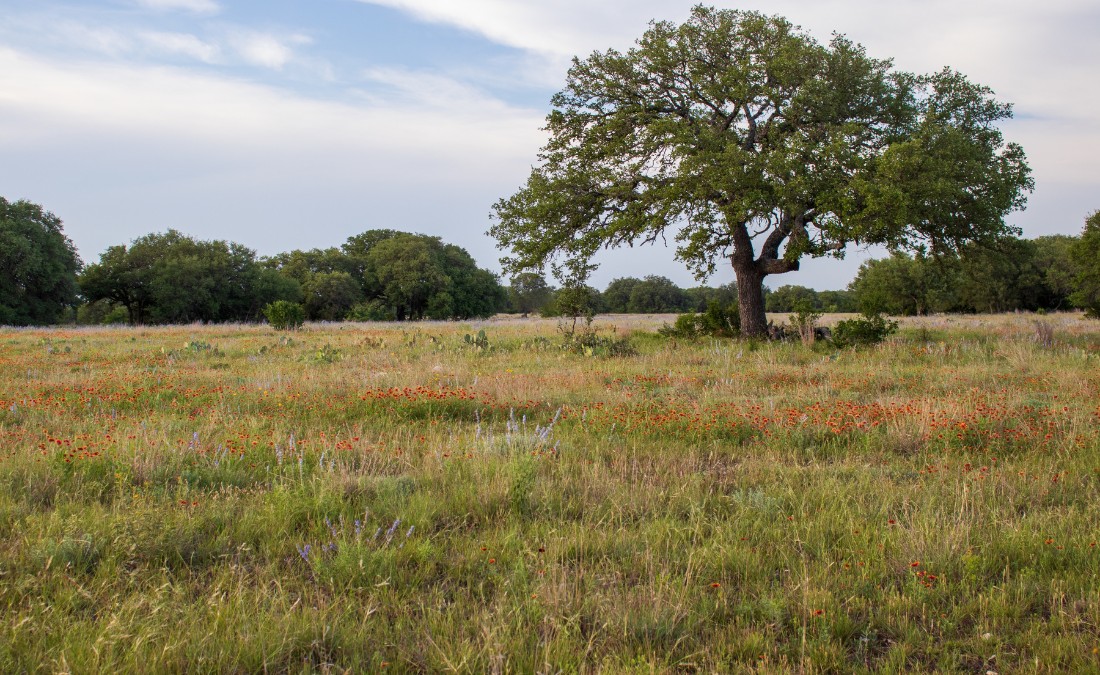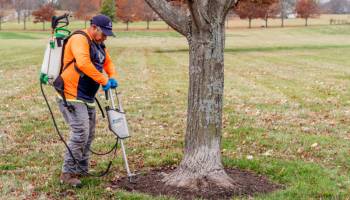5 Common Tree Insects That May Be Attacking Your Fort Worth Trees
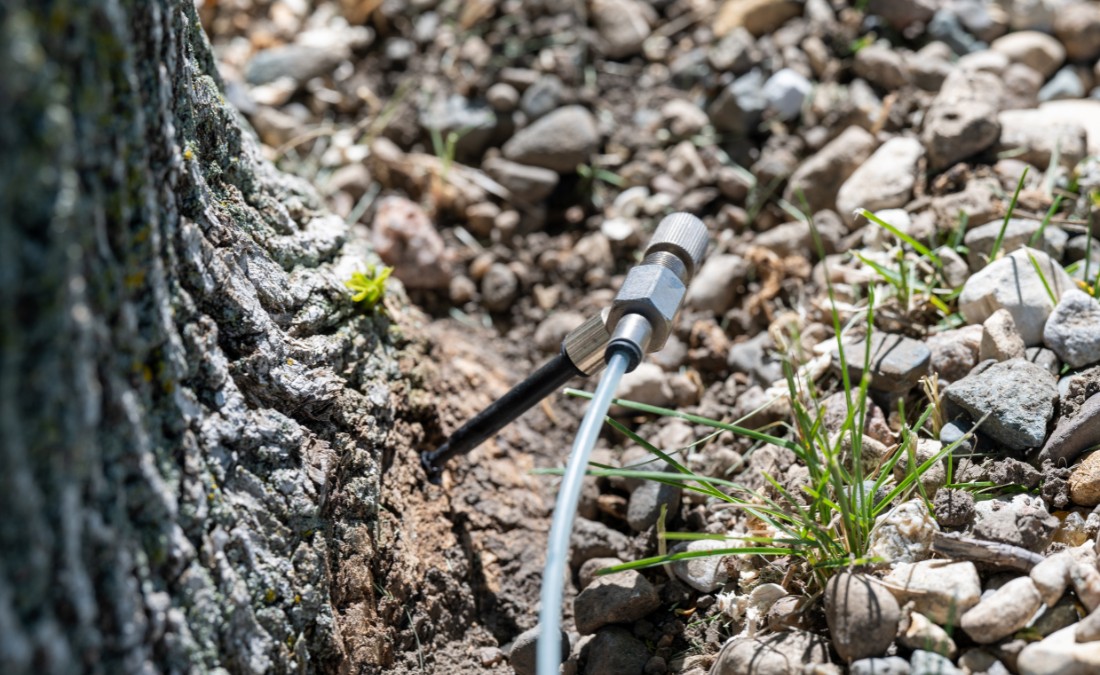
Tree insects like emerald ash borer and bagworms are destructive pests. Arbor Masters explains how to prevent them, identify them, and protect your trees.
When your trees aren’t looking as vibrant as they should, one of the most common problems is an attack from tree insects. Early identification can be the difference between saving your tree and needing to remove it. Learn about the common insects in our area, how to identify them, and what to do when you see these pests.
Key Takeaways:
- Fort Worth trees face several destructive insect threats, ranging from bagworms that attack evergreens and require removal or targeted insecticides to the newly discovered emerald ash borer that can kill ashes within a few seasons.
- Early detection is crucial for managing pests; many insects, like the emerald ash borer and southern pine beetle, cause irreversible damage before visible symptoms appear, making prevention and regular monitoring essential.
- Some tree insects, like aphids and hackberry emperors, cause primarily cosmetic damage that trees can usually recover from with basic care and natural control methods.
- The southern pine beetle poses a significant threat to pines in the area, working in groups to overcome tree defenses and requiring either preventive treatments or careful monitoring to protect trees.
- Homeowners can manage most pests through cultural practices (like proper watering and stress reduction), biological controls (such as beneficial insects), and targeted chemical treatments when necessary.
5 Common Tree Insects Harming Your Fort Worth Trees
Trees in our area face numerous insect threats, ranging from leaf damage to complete tree death. By knowing what bugs are out there, you can make a plan for how to deal with them. The five most common pests we see in Fort Worth are:
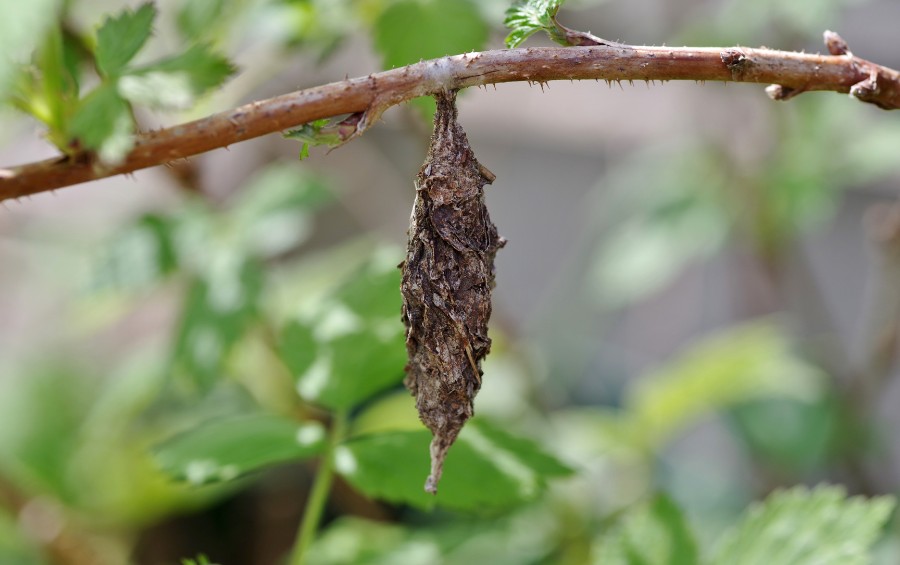
1. Bagworms
Bagworms are a common sight in the Dallas-Fort Worth area and are known for the distinctive, pinecone-like bags they create. These brown or green silk bags can grow up to 10 centimeters long and often hang from tree branches, blending in with the foliage.
The caterpillars are small and difficult to spot, measuring only a few millimeters long. They pupate into moths to end their life cycle.
While bagworms don’t pose any threat to your pets or family, they can injure your trees rapidly. Some of the species that bagworms attack include:
- Arborvitae
- Juniper
- Pine
- Spruces
Bagworms can defoliate trees quickly if not addressed early. Some options for controlling bagworm infestations include:
- Hand Removal: If you spot bagworm cocoons on your trees, the simplest method is to remove them by hand. Pick the bags off the branches and drop them into a bucket of soapy water to destroy the larvae before they hatch and spread.
- Targeted Insecticides: For larger infestations, applying insecticides can help stop bagworms before they do serious damage. At Arbor Masters, we use Acelepryn®, a targeted insecticide that effectively controls bagworm caterpillars while minimizing harm to beneficial insects that naturally manage other pests in your yard.
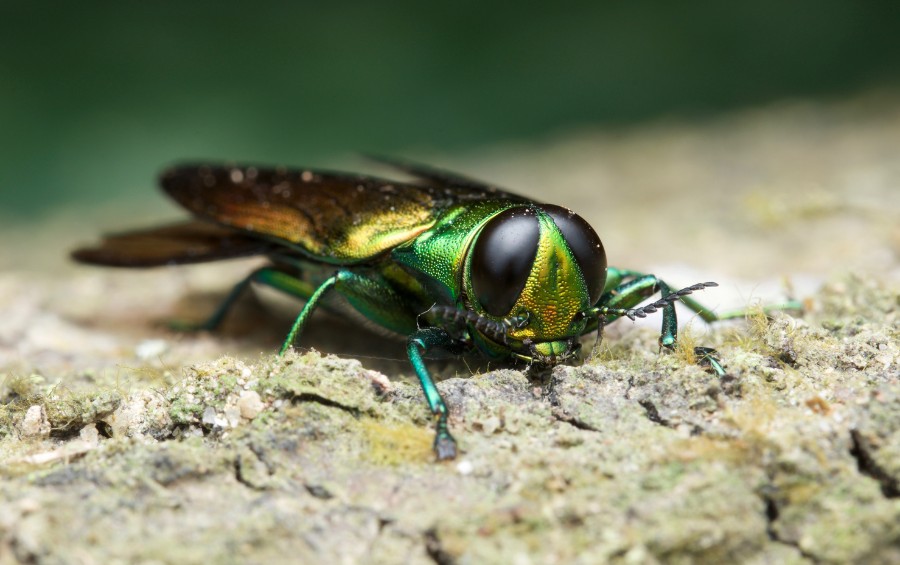
2. Emerald Ash Borer
In the summer of 2024, Fort Worth ash tree owners got the news that arborists identified emerald ash borer (EAB) in the area. This destructive pest is responsible for devastating ash populations nationwide, and our ash trees are now at risk.
EAB larvae burrow into an ash and feed on the inner bark. As the damage progresses, it cuts off your tree’s ability to transport water and nutrients to and from the canopy to the roots. Within a few seasons, your ash trees will be dead, and the only thing left to do will be to remove them.
By the time you see the symptoms of EAB, it’s likely too late to save the tree. Some signs include:
- Thinning of the canopy
- Branch dieback
- Increased woodpecker activity
- D-shaped exit holes
- Galleries under the bark
When it comes to Emerald Ash Borer (EAB), prevention is often the best strategy. Certified Arborists can apply insecticide injections that protect your tree before EAB infestation begins. These treatments are typically repeated every two to three years and are most appropriate for mature, high-value ash trees you want to preserve.
If your ash trees are already declining – or if proactive protection isn’t the right fit – removal may be the safest option. Dead and dying ash trees become extremely brittle, making them hazardous to work with and even more dangerous to leave standing.
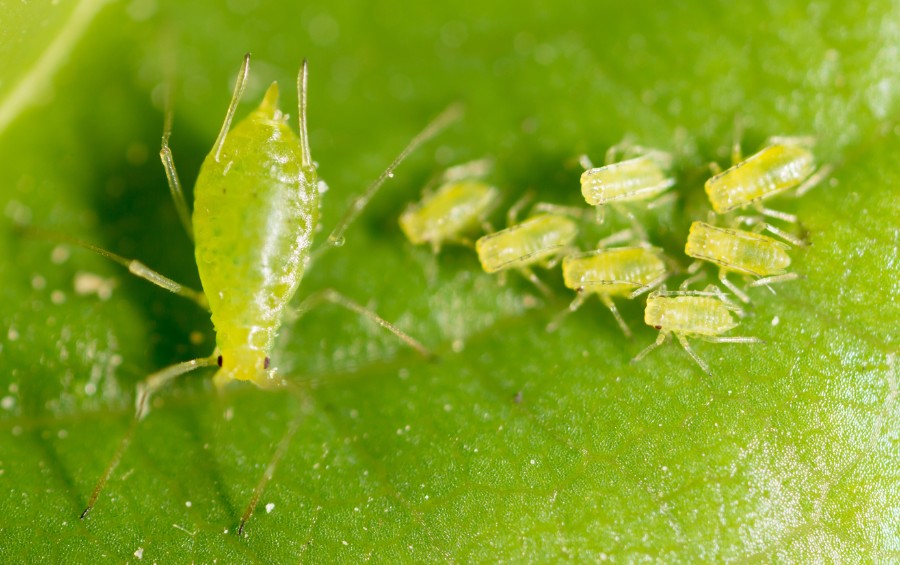
3. Aphids
Aphids is an umbrella term that encompasses 250 species of insects that attack trees and plants. Some common aphids in Texas include green peach, crape myrtle, and oleander.
Identifying aphids is difficult because of their small stature (around 1/16 to ⅛ inches long) and the various ways each species presents itself. They generally have pear-shaped bodies and long legs, and their colors range from green to red, gray, brown, and black.
Aphids use their piercing mouthparts to draw out juices from plants to feed. The damage varies depending on the species, but you can identify it by looking for:
- Deformed leaves
- Yellowed leaves
- Galls on leaves, stems, and roots
- Stunted growth
- Sooty mold
Generally, you won’t need to use chemicals to control aphid populations, as other IPM practices can adequately control the population. Some methods we recommend include:
- Spray branches with water to remove aphids
- Add beneficial insects that attack aphids to your landscape
- Remove weeds that house aphids
- Prune infested sections of the plant and destroy them
In cases with extreme infestation, Neem oil, horticultural soap, or horticultural oil may be necessary to lower the population. Consult with an arborist before using any chemicals.
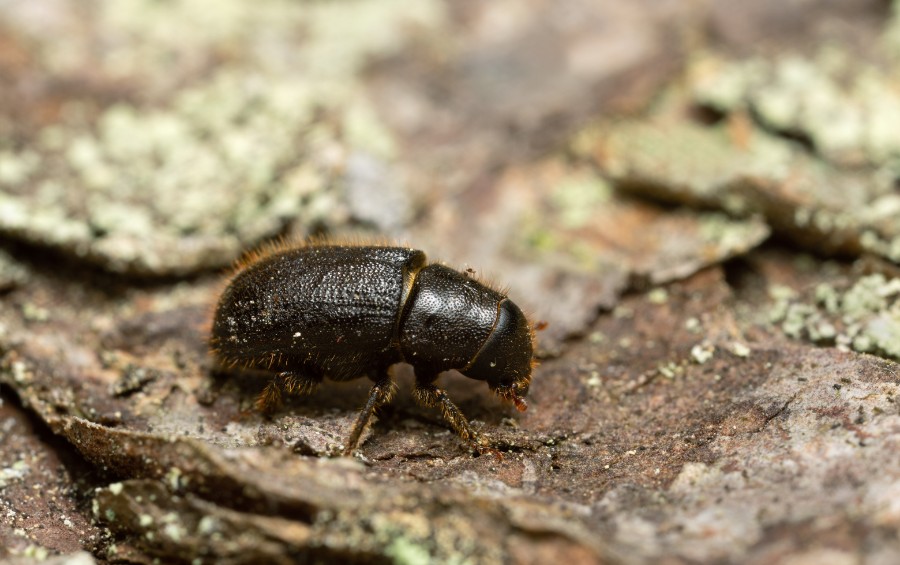
4. Southern Pine Beetle
Southern pine beetle (SPB) is one of the most destructive insects that attacks pine trees. Early detection of SPB can save your pines, whether you have one tree or a forest of them.
SPB adults attack trees by boring into them and laying eggs in S-shaped galleries. Healthy pines will put out resin to try and prevent the beetles from gaining a foothold, but when the infestation is large enough, they work together to clear the resin.
The eggs will eventually hatch, and the larvae will begin feeding on the inner bark, similar to an EAB infestation. Eventually, the damage will girdle the tree, preventing the transportation of water and nutrients throughout. Once the infestation is too severe, the only option is to remove the pine.
Because the beetles are tiny (about 2-4 mm long), it is difficult to see with the naked eye. Some symptoms to look for to identify a potential SPB problem include:
- Yellowing foliage
- White, yellow, or red pitch tubes on the trunk
- Sawdust at the base of the tree
- S-shaped galleries after removing the bark
Keeping your tree healthy and stress-free from drought can increase its defenses against SPB. Insecticides, especially those with the active ingredients permethrin and bifenthrin, are also effective in preventing and controlling the population.
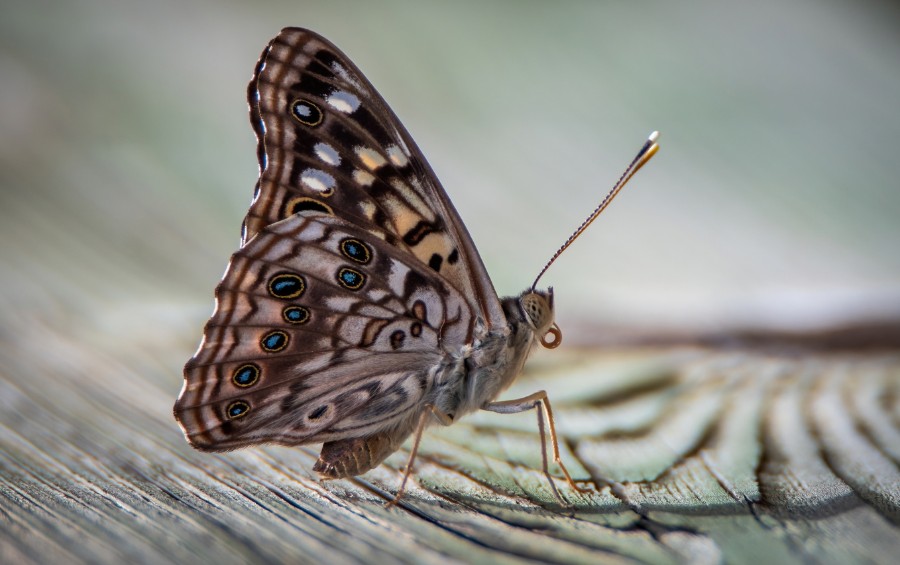
5. Hackberry Emperor
Hackberries are common trees in the Fort Worth area, and one of the main threats they face is from the hackberry emperor, also known as the hackberry butterfly. This pest is not life-threatening to your tree but will cause damage and stress.
Hackberry emperor caterpillars will feed on leaves, defoliating trees over time. Unless the infestation is too severe, your hackberry can replenish the lost leaves and fully recover. You can identify this insect by looking for the adult butterflies that remain around the tree or on plants near hackberries. Adults also feed on wounds.
There is usually no need to treat for hackberry emperors, as your tree can recover from the damage. However, talk to an arborist about treatment options if the infestation is too significant.
Frequently Asked Questions About Tree Insects in Forth Worth
With so many to keep track of, it can be challenging to know how to deal with tree insects and what kind of harm they cause. To help you better understand pests, we’ve compiled some common questions about protecting your trees from them.
Are there ways to control insect populations without using chemicals?
Yes, you can control insect populations in several ways without using chemicals and instead, implement an IPM plan. Some aspects of this plan include:
- Keeping trees healthy and stress-free
- Introducing predators who control pest populations
- Removing at-risk trees
- Destroying eggs and insects as you see them
What should I do if I don’t know what type of insect is attacking my trees?
If you can’t tell what kind of insects are damaging your trees, try to take a picture of them. Also, look for any other signs of the pest, such as cocoons or eggs. Contact an arborist, show them these pictures, and allow them to identify what’s attacking your trees.
Can planting different species of trees make my landscape more insect-resistant?
Yes, planting a diverse mix of tree species can make your landscape more resistant to insect infestations. Most insects target only a limited range of host trees. By incorporating a variety of species, you reduce the chances of pests spreading across your entire property. Even if one tree is affected, the infestation is less likely to impact surrounding trees—helping to contain damage and protect your overall landscape.
Protect Your Trees with Arbor Masters’ Preventive Pest Treatments
With so many different insects to deal with in Fort Worth, being able to identify and treat all of them yourself is nearly impossible. You need the help of a professional arborist who understands these pests and how to treat them.
The team at Arbor Masters has experience working in Fort Worth, dealing with our local pests, and keeping trees alive. We use all the latest methods and equipment to control insect populations and try to save your trees. And if we can’t, our team are experts in removing dead species. Call us today at 469-586-5829 or request a quote online.
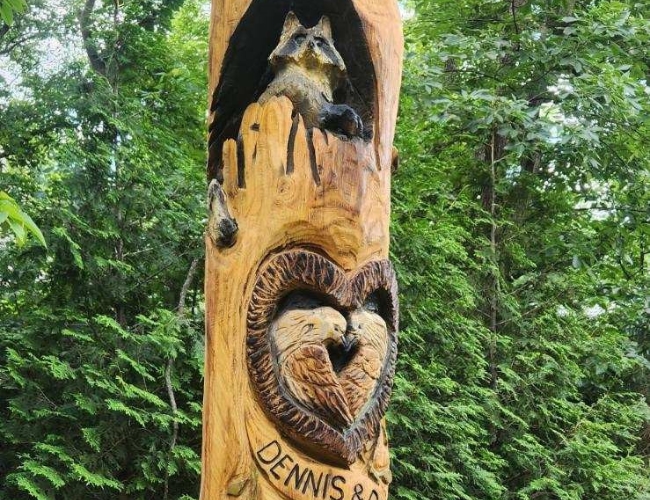
Get the latest local news, tree care tips, special offers, and company updates directly to your inbox! It's easy to subscribe and there's no spam - we promise.
"*" indicates required fields

